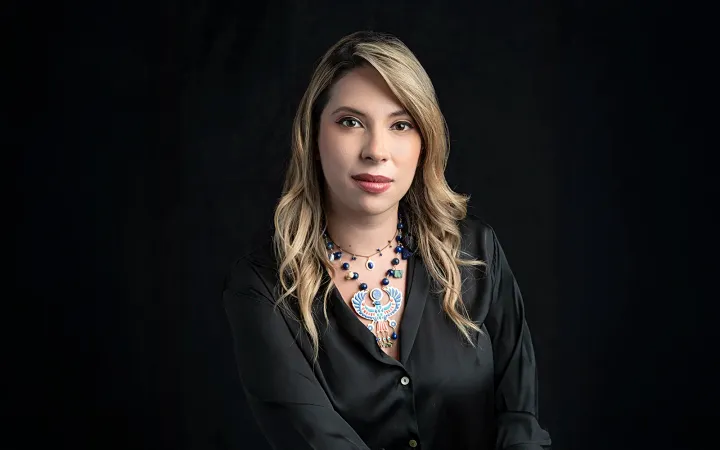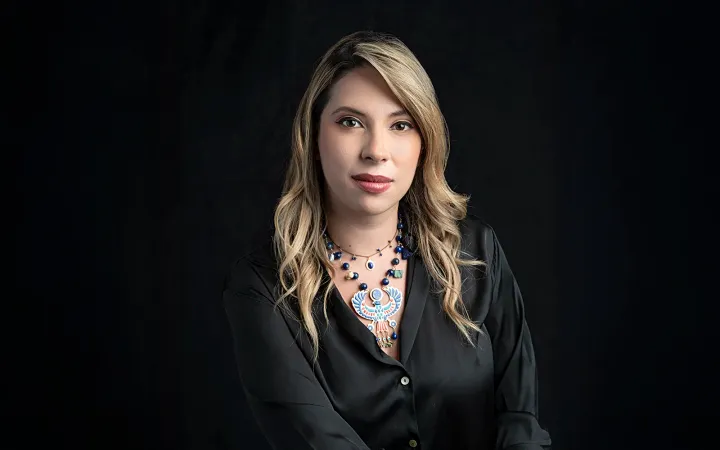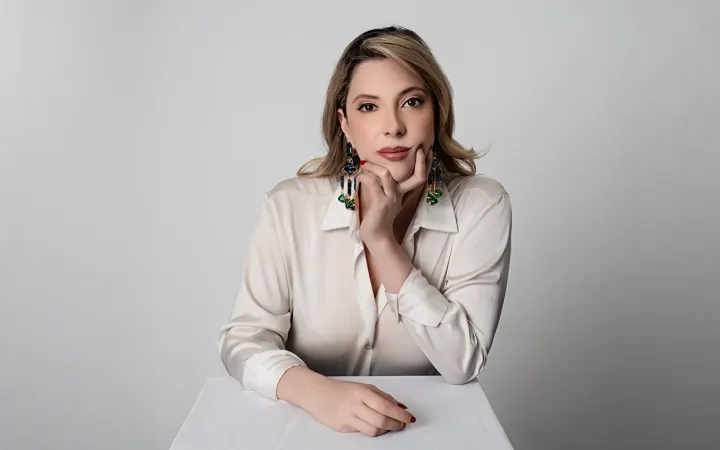Por Yuriria Rodríguez Castro

En seguimiento a mi anterior columna, https://www.opinion51.com/yuriria-rodriguez-2411-ciego-fentanilo a continuación propongo el siguiente esquema basado en los conceptos del sociólogo Max Weber, acerca de las ciudades-Estado y cómo podrían clasificarse según las materias primas, producción, distribución y consumo de narcóticos de frente a nuestra nueva gran batalla, el fentanilo:
Geopolítica y simplificación del mercado de drogas
Hay una política del crimen organizado que se extiende a nivel global. Este análisis advierte la división de los mercados de drogas sintéticas desde un enfoque sistémico donde se observa que existe una geopolítica del mercado de drogas con países cada vez más especializados —aunque no exclusivamente—, que tienden a dedicarse unos a proveer la materia prima, otros a la producción, distribución y, algunos más, al consumo.
En Economía y sociedad, el propio Max Weber se refiere a que las asociaciones son autónomas o heterónomas, autocéfalas o heterocéfalas, por lo que nosotros consideramos que las asociaciones delictivas o criminales no serían la excepción: “Autonomía significa, al contrario de heteronomía, que el orden de la asociación no esté otorgado —impuesto— por alguien fuera de la misma y exterior a ella, sino por sus propios miembros… (…)”.
Así nos podríamos aventurar a pensar que quizá ninguna otra institución legal del Estado mexicano es tan autónoma ni tan democráticamente abierta al pueblo como el narcotráfico; ellos tienen plena libertad para determinar el grado de asociación que requieren de los actores políticos y sociales.
La violencia en el crimen organizado no es lo mismo que la delincuencia organizada porque el crimen se organiza más allá del delito, pues puede operar en la legalidad y sostenerse sin cometer delito alguno manteniendo su comportamiento de organización criminal, pero cuando el narcotráfico como organización nota que está a punto de perder su control político, así como su poder cultural y social, recurre al comportamiento terrorista, algo que ha pasado en México.
El problema del narcotráfico es la gestión económica que —según Weber— supone una administración “pacífica” de los productos, por lo que el crimen organizado y su principal mercado, el narcotráfico, tiene la paradoja de ser una economía gestionada por la violencia, es decir, una administración violenta que en ocasiones ocupa el lugar del producto en las distintas zonas que domina. Por lo tanto, podríamos decir que la geopolítica criminal tendría que ser una división funcional del mercado de los narcóticos, con naciones dedicadas más específicamente a un tipo de participación, ya sea proveer las materias primas para las drogas, intermediar —en la preparación o producción—, distribuir, rentar o consumir el producto.
La historia de las drogas nos demuestra que cada vez que un nuevo narcótico es introducido al mercado genera una gran crisis global y el fentanilo es el reto más importante al que nos hemos de enfrentar por ahora, pero las primeras drogas de diseño inspiradas en los fármacos sintéticos que generaron un mercado de metanfetaminas fueron aquellas como el del crac y el cristal, pues su introducción al consumo significó una producción más discreta en laboratorios clandestinos pero que aún requerían de ciertas condiciones de producción más ostensibles en la actividad criminal, aunque todavía se requería de instalaciones más caras y amplias que los reducidos espacios donde se produce el fentanilo
El crac y el cristal fueron los primeros estupefacientes que les permitieron a los narcotraficantes ahorrarse la inversión de grandes y notorios sembradíos, reducir el riesgo de pérdidas por drogas echadas a perder, por incautaciones en el tráfico de los tonelajes para satisfacer una proporcional demanda, así como aumentar la producción industrial masiva y prácticamente ir reduciendo la dependencia con el proveedor de materia prima, tanto, que ahora con el fentanilo, los campesinos que sembraban adormidera en México, se quedaron sin su sustento con la llegado del precursor sintético traído de China, el cual es legal en su distribución como tal, y además mucho más rendidor y transportable que si cuando se trafica primero la adormidera y se extrae después de varios cortes el polvo para la heroína.
Así es como el primer experimento que logra simplificar el mercado de las drogas tiene su antecedente en el crac o cocaína cocinada que en las calles se le llama piedra, pues esta simplificación redujo gastos en la materia prima cocaína para conseguir vender dosis de menor costo y un mercado cada vez menos dependiente del sector primario y de esta manera lo ubicó en el sector intermediario, con los distribuidores, quienes a su vez, terminaban de producir una droga distinta a la base original extraída de la planta.
El crac y el cristal dejó mucho poder en los distribuidores y en algunos consumidores que aprendieron a prepararlos, pues eran productos molecularmente más estables, lo que no muy óptima para las ganancias del productor-distribuidor mexicano. Ahora, con la llegada del fentanilo, la zona de mercado se amplió considerablemente restringiendo las funciones y el control del precursor legal en China como proveedor de la materia prima, mientras que México asume la producción y distribución ilegal, mientras Estados Unidos es el principal consumidor o rentista.
Desde la antigüedad, primero Gran Bretaña, luego Estados Unidos, vieron en el mercado de las drogas una división funcional conveniente entre naciones, así fue como desde las guerras del opio en el siglo XIX, Gran Bretaña, Francia y EU, fueron primero invirtiendo en mercados de droga asiática y luego, intentando frenar su mercado a través de sanciones legales y económicas, para después enfriar sus relaciones político económicas con el gigante asiático; algo muy similar ocurre ahora con México desde el siglo XX, sólo que nuestro país dista mucho de ser un gigante y está más cerca de la zona de mayor consumo.
El siglo XXI parece ser la era de los opioides sintéticos y de la simplificación del mercado de las drogas encabezada por México, donde el comercio bilateral estará más condicionado que nunca por el tráfico de fentanilo, sobre todo porque las guerras y las drogas, así como las guerras por las drogas, son prácticamente inseparables.
Desde aquellas guerras del opio, Estados Unidos y las potencias de Occidente fueron optando por una política de inversión disfrazada de conflicto político en mercados de drogas con el llamado triángulo dorado asiático de Laos, Myanmar y China, pero como la droga implicaba un impulso mayor a la venta de armas, así como a otros mercados clandestinos donde hasta los escenarios de legalización son fracasados intentos por frenar la violencia criminal, ya que drogas, armas y personas interactuando en un mismo mercado, a veces como consumidores y otras como producto, no son comparables ni siquiera con el producto legal de más presencia: el teléfono celular, donde por más que se haya esforzado Steve Jobs en generar una adicción a sus dispositivos, ningún teléfono móvil de esa marca expira más rápido que lo que tarda un adicto en acabarse la droga y demandar más, ni tampoco en siquiera acercarse a la necesidad del violento por agotar munición o al proxeneta en sus transacciones y abusos.
Los mercados de drogas se benefician de la ilegalidad porque saben que prácticamente ningún escenario de legalización puede evitar su desmesura; imaginemos escenarios de legalización parcial de algunos estupefacientes en países donde el respeto a la legalidad es frágil, donde la corrupción y la violencia pasan por encima de cualquier límite normativo. Ahí donde se intenta crear un espacio de excepción como se experimentó en la ciudad de Ámsterdam, es la excepción que confirma la regla, pues ni siquiera ellos con su legislación, su Estado y su sociedad, están exentos de organización y violencia criminal, pero aún menos lo están otros países del mundo como México, donde al primer negocio legal drogas se podría ver acosado inmediatamente por el cobro de piso, por ejemplo.
El capitalismo alcanzó su máximo ideal en el narcotraficante y el adicto, pues mientras el hábito de consumo beneficia a cualquier producto para colocarse en el mercado, las drogas son consumismo puro, siempre se necesita algo más fuerte y el producto está obligado a superarse, mientras que la demanda depende de una ansiedad precipitada que produce efectos físicos inmediatos que sacan al adicto a la calle para encontrar como sea su satisfactor. Es cierto que la prohibición eleva la demanda porque genera ansiedad, pero muchos otros aspectos también detonan la exigencia del consumo de drogas, que las zonas de mercado de los estupefacientes están facilitadas por la violencia, la ignorancia y la insalubridad. Ahí donde otros productos fracasan, las drogas y su acompañamiento siempre triunfan.
Cualquier otro producto está limitado por un consumidor que le teme a un exceso cuyo desenlace sea la muerte, pero la droga no tiene ese problema, es una consecuencia aceptada.
En una capacitación que impartí, un discípulo del área Antidrogas me dijo que eran los adictos quienes pensaban de qué manera iban a consumir la droga, si por vía nasal, bucal, intravenosa o hasta ocular, que no era asunto del narcotraficante. Sin embargo, ese día de regreso a casa comencé a pensar como la adicta que fui, a veces hasta pienso como narcomenudista, pues conviví con muchos de ellos, entonces concluí que el cómo consumir la droga no sólo preocupa al adicto, también a quien la produce y distribuye. Es evidente que los narcotraficantes sí tienen una muy clara idea de que la droga entrará en el adicto por cualquier orificio del cuerpo, basta el ejemplo del crac, uno de los primeros experimentos que funcionaron pensando en cómo ganar más con menos y mucho más barata cocaína, algo que el fentanilo ha superado por mucho.
Los productos suelen estandarizarse, ponerse límites de calidad para ser preferidos y distinguidos por el consumidor, dicha estandarización tiende al estatismo y la homogeneidad de sus componentes, mientras que los productos narcóticos suelen evadir los estándares de calidad, sin perder los estándares de identificación con su consumidor. El fentanilo evade ambos de forma exitosa; los adictos tienen más dificultad para identificar la presencia y cantidad del precursor, incluso algunos se engancharon por medio de la adicción a fármacos controlados como las pastillas de Oxicodona, porque la droga ha sido introducida por los narcotraficantes mexicanos disfrazándola con el rótulo M-30; por lo que algunos consumidores piensan que están tomando una droga menos peligrosa, mientras los que ya la conocen, tienen poco para identificarlo; quizá el grosor del rótulo y el color de la tableta.
Las opiniones expresadas son responsabilidad de sus autoras y son absolutamente independientes a la postura y línea editorial de Opinión 51.






Comments ()